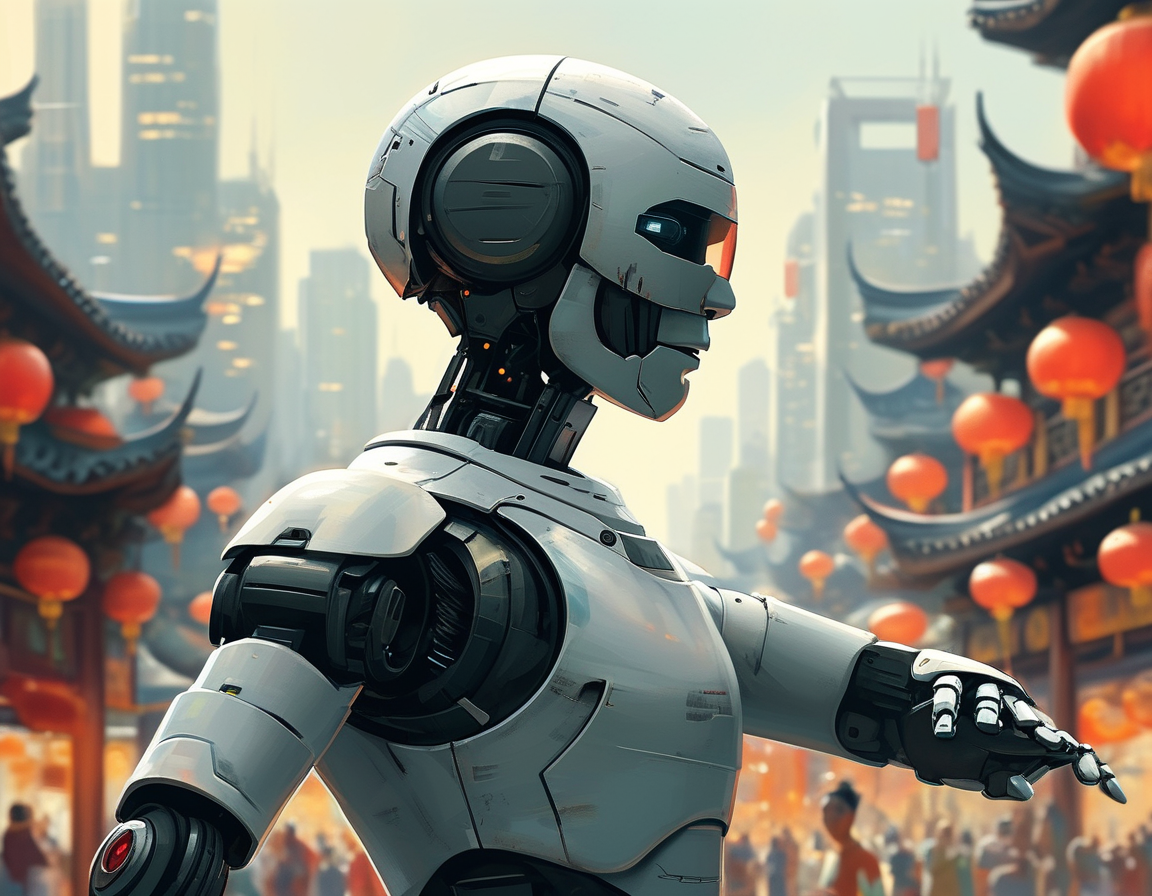The tech world is buzzing. Elon Musk, the man behind Tesla and SpaceX, faces an impending challenge. It’s not the kind of competition we’ve come to expect. A new battleground is emerging: humanoid robotics.
Musk’s ambitious investments in technology have propelled him to the forefront of innovation. However, it seems that the winds of change may not be in his favor anymore. China’s advancements in humanoid robots could shift the balance drastically.

The humanoid robotics industry is projected to explode. Some estimates suggest a market value of $10 trillion. That’s a staggering figure. It’s hard to ignore the potential here.
In January, a dramatic showcase captivated the globe. Chinese humanoid robots performed traditional dances during the Lunar New Year gala. More than a billion people tuned in. This spectacle was not just entertainment; it was a clear message about the prowess of Chinese robotics.
These robots demonstrated impressive skills. They danced, performed martial arts, and even rode bikes. Such capabilities highlight significant progress in the field. Isn’t it fascinating to see how quickly technology evolves?

In the robotics race, Chinese companies are closing the gap fast. Musk’s Tesla introduced Optimus to the world in 2021. The prototype following in 2022 sparked massive interest. But now, with China hot on Tesla’s heels, the competition is fierce.
The Chinese government has firmly positioned humanoid robotics as a priority. A recent policy document outlines ambitious production targets by 2025. They view this technology as vital to their future. Isn’t it skillful how strategy and policy drive innovation?
Tesla’s initial advantage may not last long. Companies like BYD and XPeng are gearing up to enter this landscape. Sounds familiar? They emerged as leaders in the electric vehicle market, and now they’re eyeing humanoid robots.

Consider Unitree, a Shenzhen-based company. They unveiled their G1 robot capable of executing a roundhouse kick, priced at just $13,697. In contrast, Tesla’s Optimus robot could cost between $20,000 and $30,000. This price gap might be their ticket to success.
High production costs can limit market reach. Lowering prices could mean wider accessibility. Imagine how this shift could transform various industries. Is the future of humanoid robotics about affordability?
The support for robotics extends beyond consumer markets. Hospitals, care facilities, and factories could benefit from humanoid robots. In some industries, these robots may soon become commonplace. Isn’t it exciting to think about a world where robots assist us in daily tasks?
AI technology is crucial here. Humanoid robots rely heavily on sophisticated AI systems. Yet, developing these systems requires significant investment. Can the current leaders maintain their footing despite these challenges?
China struggles with AI chip supply. Companies often rely on Nvidia. But there’s a burgeoning push for self-sufficiency in China. New chip development could change the game altogether.
Despite existing technology gaps, Chinese developers are making strides. They build on knowledge gleaned from Western innovations. This cycle of innovation and adaptation could yield impressive results.
Goldman Sachs has painted an optimistic picture. The global humanoid robotics market could be worth $38 billion by 2035. The growth potential spans many sectors and appears promising. Could we really see a million humanoid robots sold each year by 2030?
AI robots could soon become everyday helpers. They might serve as caregivers, household aides, or workforce support. Picture having a humanoid companion assisting you in your daily life. Would you welcome that kind of change?
China’s commitment to rapid production gives it a distinct advantage. They have mastered scaling processes in manufacturing. This skill is invaluable as the humanoid robot market heats up.
The horizon looks complex for Elon Musk. His vision for robots forms a crucial part of his future strategies. However, the transformative potential of Chinese robotics adds intriguing layers to the narrative.
Ultimately, this tech race isn’t just about competition. It’s about who can fulfill the vision of a future with humanoid robots. Musk’s Tesla pushed boundaries, but will it remain the leader?
As the debate continues, it’s apparent that the world of humanoid robotics is evolving. Will Musk’s ambitions still drive the industry forward, or will he find himself in the rearview mirror? The question remains, who will lead this new frontier?
Leave a Comment